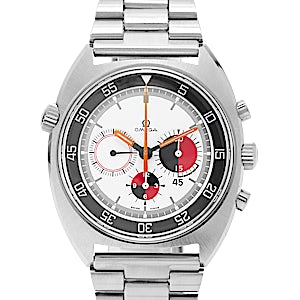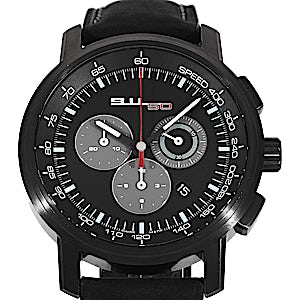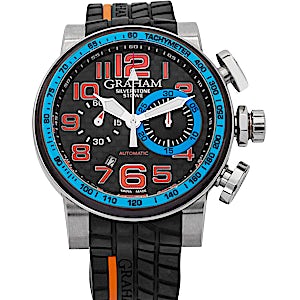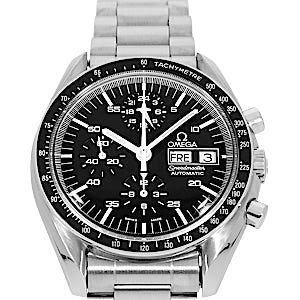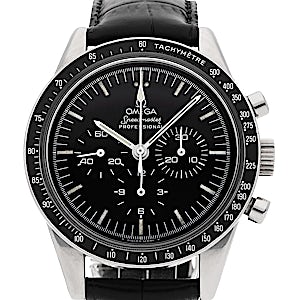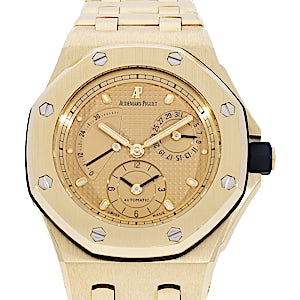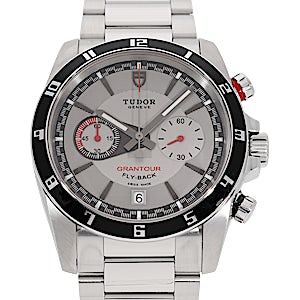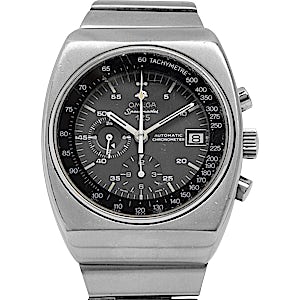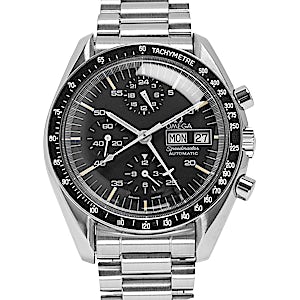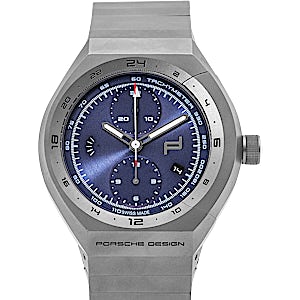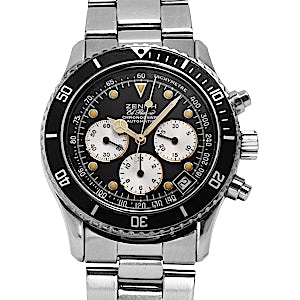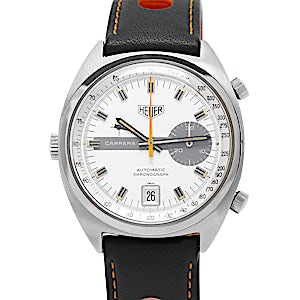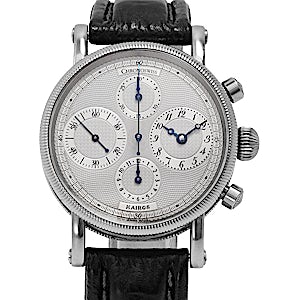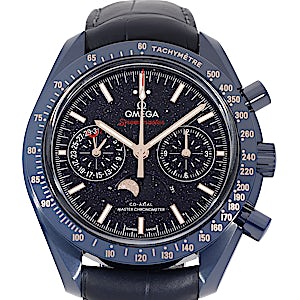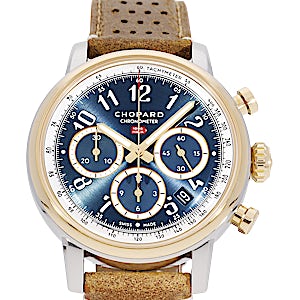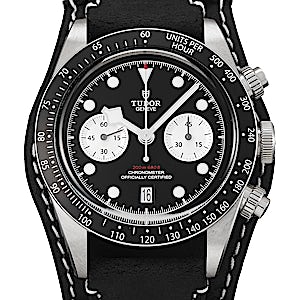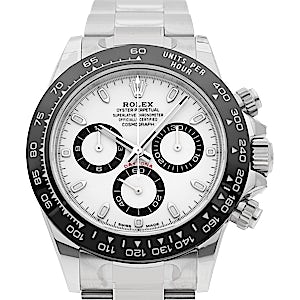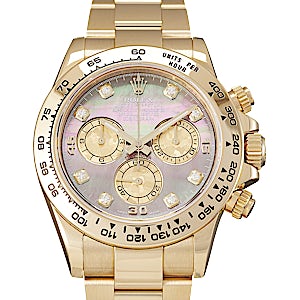Chronograph Watches
Measuring time with a chronograph
A tool to measure time: The chronograph is one of the most beloved of complications in the world of watches. The stop watch function that the chronograph offers is not only a charming addition to a wristwatch, but of great use in the timing of short, even long, intervals of time. Depending on the model, a chronograph watch may be worn as a daily beater, as well as to those more formal functions.
The chronograph – a wristwatch and stopwatch in one
Start, stop, reset – with a stopwatch conveniently worn on the wrist, you can measure time on the fly. Ever since the invention of this useful device, stopwatches, also called chronographs, have been faithful companions to sports and athletic events, such as horse racing, regattas, or anywhere speed and the measurement of time is of crucial importance.
The impressively fine-tuned mechanism behind a chronograph is the creation of mechanical ingenuity and a device borne out of necessity. Through a special module, the standard three hand wristwatch is reconstructed into a chronograph and is able to measure time in seconds, minutes, hours, or even to one-tenth of second. A chronograph is easily recognisable by way of the dial, which often has up to three totalizers that present the recorded time. Most of these watches have a central chronograph seconds hand so that any interval of time can be measured to the ever crucial second. Their cases usually showcase two chronograph pushers, one to start or stop the chronograph hand, the other to reset it.
In order to clear up any confusion, let us note that a chronograph and chronometer are not the same thing. A chronometer is a watch that is especially accurate and is certified as such. Ideally, a chronograph would also a chronometer, an example would be for instance as the Rolex Cosmograph Daytona is.
The history of the chronograph
Sports betting amongst the wealthy became ever more widespread during the 19th Century, as the speculation at competition became a popular pastime. Those individuals who were privy to the track times of contestants were at a great advantage when placing their bets.
Chronographs did not only gain in popularity in athletics, but also in the field of scientific study, in the technological realm, and within the military. The first patent for a chronograph was granted to Nicolas Rieussec in 1821. He was responsible for recording the times at the horse races at the Champ de Mars. Interestingly, in the past, the time intervals were recorded by noting lines or dots with ink on a rotating dial. The introduction of instruments with stopwatch functions soon followed. A chronograph that showcased all of the necessary mechanisms in order to start, stop, and set the hand to zero was first presented in 1862.
Chronograph: mechanics and function
The chronograph is undoubtedly amongst the most popular of watch complications. It is delightfully simple to use, whilst also serving a very practical purpose. Pushers on the watch case allow one to start, stop, and reset the chronograph. One of the great advantages of a chronograph watch is that its stopwatch function can be used independently of the watch’s basic time-telling.
There is a special mechanism in the chronograph that allows it to work as it does, allowing the user to start, stop, or set the stopwatch hand back to zero. There are two chronograph systems to differentiate between, the column-wheel and cam-actuated chronograph. The column-wheel chronograph works using a nine-toothed gear to control the system. Most notably, the chronographs that were produced in the 1930s and 1940s used the column-wheel systems. These watches are highly sought after by watch collectors to this day.
The display of chronographs varies from model to model. A widely used display format currently is the so-called Compax layout, which was made popular by Universal Genève. These types of chronographs have three totalizers on the dial that are arranged in a V-layout, giving the watch an aesthetically balanced appearance.
Flyback and Rattrapante: The continuous development of the chronograph
The word “chronograph” is derived from the Ancient Greek words “chrono”, meaning time, and “graph”, meaning to write. In combination, “chronograph” roughly translates to “time-writer”. The chronograph allows for different methods of timing. A special complication that is an extension of the conventional chronograph is the Flyback. The usual chronograph is reset to the zero-position and automatically restarted. The Flyback’s chronograph hand, however, can be reset while still moving without first stopping it – with one press of the pusher, the chronograph is sent back to the zero and immediately starts running again.
A further modification of the chronograph is the split-seconds chronograph, which is also known as a Rattrapante. Via a second, separate chronograph hand, two simultaneous events can be measured independently of one another. So while the functions of the Rattrapante and Flyback are similar, they are two different complications.
Calculating with a chronograph
By combining a chronograph with a functional display, a watch can be modified to perform standardised calculations. A tachymeter allows the wearer to quickly find out the speed of timed objects. By measuring the time it takes for a moving body to cover a specified distance, the watch can measure the speed of said body. A telemeter allows the wearer to approximate the distance to a certain event or object (that can be both seen and heard). A final example is a pulsometer scale, to measure a person’s heart rate per minute. Pilot’s chronographs are very popular watches that are exceptionally legible. Inspired by the flight instruments of the Luftwaffe, these watches showcase clear-cut straight lines and have very pragmatic designs.
Famous chronograph movements
The first automatic chronograph watches were only introduced in 1969. Manufacturers competed to be the first ones to the market with a self-winding chronograph movement. On the 10th of January 1969, Zenith released the “El Primero” beating out Breitling, Heuer, and Hamilton-Büren. The first two versions of the “El Primero” were the “3019 PHC” movement with a date window and the “3019 PHF” movement with a triple date moonphase.
One of the most successful automatic chronograph movements is the Valjoux 7750 movement from 1973 created by ETA. Indeed, it has become a permanent bestseller. Important are also the Lemania 5100, which is no longer in production, or the Lemania 2310, also known as Omega’s “Caliber 321” that powers Omega’s Speedmaster watches. Even Patek Philippe used this movement under the name of “CH27-70”.
In the year of 2000, Rolex released their own in-house chronograph movement, the 4130. In 2011, Omega released their calibre 9300, after it had introduced the calibre 8500. The Seamaster Planet Ocean Chronograph Seamaster Planet Ocean Chronograph, for instance, was fitted with the calibre 9300 with a 60-hour power reserve.
The great watch brands are always looking to pair the chronograph function with other complications in order to heighten the attractiveness of their watches even further.
Top 10 Chronographs
1. Rolex Daytona
The Rolex Daytona is the result of decades of experience in watchmaking. It is the essence of form and function, it is contemporary and decidedly elegant. As the most beloved of steel sports models amongst women and men, this chronograph from Rolex is easily recognised. From 1988 to 2001, the Rolex Daytona was fitted with the impressive “El Primero” movement supplied by the watchmaker Zenith. In 2001 Rolex released their own chronograph, the Calibre 4130 which replaced the Zenith movement.
One of the most famous celebrities who wore a Rolex Daytona was Paul Newman. The particular type of model that he wore, which was only produced from 1969 to 1970 has been christened the “Paul Newman Daytona”. It is now highly coveted and certain collectors are willing to pay astronomical prices to add the “Paul Newman” Daytona to their collections.
2. Omega Speedmaster Professional
The Omega Speedmaster Professional is one of the most famous chronograph watches in the world. Known as the Moonwatch, it accompanied Buzz Aldrin during the first ever moon landing. A year later, the Omega Speedmaster Professional rescued the Apollo 13 mission from a potential disaster. Today, this Omega model is regarded as the most reliable watch for space missions, such as the current ISS program. The watch showcases features such as a 42 mm case, black dial, a 30- and 12-hour counter, and its legendary tachymeter scale. The indices, hour, and minute hands that are coated with Super-Luminova and therefore glow in the dark, making the watch legible even in unfavourable lighting conditions.
3. Audemars Piguet Royal Oak Offshore
In 1972, Audemars Piguet launched a watch of the highest calibre: The Royal Oak, a watch that sprung from the genius of Gérald Genta. Collectors and watch enthusiasts were quickly beguiled by the luxury sports watch and the Royal Oak became the bestseller amongst Audemars Piguet’s models. For the 20th anniversary of Audemars Piguet, they introduced an even sportier version of the Royal Oak: The Royal Oak Offshore. This model showcases scratch-resistant pushers and a bezel made of ceramic material, reducing wear on the watch. The new model features an automatic movement with a 60-hour power reserve.
4. Hublot Big Bang
The Big Bang collection by Hublot was launched in 2005 and is their flagship model. Hublot Big Bang characteristically showcases a fusion of leading-edge technology as well as the classic “Porthole” design. In 2013, the original Big Bang was further developed and equipped with the manufacture chronograph movement, the UNICO. Through the skeletonised dial the double coupling system and chronograph column wheel are visible, making it a one-of-a-kind watch in the industry. One of Hublot’s popular chronograph models is the 44 mm Big Bang Steel. With its HUB 4100 manual-winding movement and 42-hour power reserve, it makes for a very impressive watch.
5. Breitling Chronomat
In 1942, Breitling launched their Chronomat model – a chronograph with a slide-rule and manual-winding movement that was officially launched for the United States Armed Forces. In 1984, Breitling presented a pilot's chronograph, which had been developed for the Italian fighter squadron, the "Frecce Tricolori". The Swiss watchmaker from Grenchen had created their most successful model to date. The Breitling Chronomat is a striking model with a bold case, raised square quarter-hour indicators on the rotating bezel, and distinctive crown and pushers. Powering the watch is a Valjoux 7750, a robust and reliable workhorse movement. The 120th anniversary of the brand saw Breitling celebrating with the release of a new model: The Chronomat Evolution, a larger version of the legendary watch from 1984.
6. Zenith El Primero
The "El Primero" movement faced many challenges up to its final version: The key component of the automatic movement was the rotor able to glide on a ball bearing, which would allow the movement to virtually wind itself. Aiming to create the most accurate chronograph in the world, Zenith opted to create a ‘high-beat’ movement. A ‘high-beat’ movement is one where the balance spring vibrates at a higher rate than that of usual watches, at 36,000 vibrations per minute, to be exact. In addition, the movement was to have a date module. On the 10th of January 1969, Zenith finally released the watch in two variants, one with a date function, called the “3019 PHC” and a second called the “3019 PHC”, which had a moonphase indicator, as well as a date function. Zenith’s “El Primero” is, of course, named after the legendary calibre that Zenith released in 1969.
7. TAG Heuer Carrera Chronograph
The trailblazer amongst TAG Heuer's unrivalled heritage of watchmaking and motorsports. The Tag Heuer Carrera model was introduced in 1964 and paid tribute to the then most dangerous of motorsport races: The “Carrera Panamericana Mexico”. The Carrera was to become one of the most famous of chronograph watches in the history. The great-grandson of the founder of the company, Jack W. Heuer placed particular emphasis on optimal legibility of the watch. To achieve this, he allowed a ring insert with a 1/5th second track to be placed within the domed plexiglass of the watch. In 2010, an oscillating pinion was added to the mechanism of their concurrently presented first in-house chronograph calibre.
8. Montblanc Nicolas Rieussec
The Montblanc "Homage to Nicolas Rieussec" created a reinterpreted model as a tribute to the Rieussec chronograph of 1821. This watch, an “inking chronograph” was patented in 1822 and had been created for the timing of horse races. Later, it would inspire the watchmakers at Montblanc to conceive their Nicolas Rieussec Collection. Its appearance is characterised by a decentralised totaliser of the hours and minutes, as well as its chronograph subdials. True to the original of 1821, instead of having the hands of the subdials move, they are fixed, and the dials themselves rotate. The chronograph is powered by the Montblanc Manufacture Calibre MB R200, which has an impressive 72-hour power reserve.
9. A. Lange & Söhne Datograph
The A. Lange & Söhne Datograph is a manifestation of the German watchmakers values, their dedication to their craft, and their stringent adherence to creating watches of the highest quality. The Datograph represents sophistication, utmost reliability, together with timeless design. The Lange & Söhne Datograph is not exactly an ‘affordable’ timepiece, and one may have to deliberate at length before purchasing such a fine, yet valuable, timepiece. Nevertheless, many a watch lover seems not to be able to resist the exquisite workmanship and care that goes into creating this fine a watch.
The model was introduced in 1999 and has been on the wish list of countless watch lovers ever since. A. Lange & Söhne has released a long line of Datograph models, and within their collection are watches such as the Datograph Auf/Ab, Datograph Perpetual, or the Datograph Perpetual Tourbillon. All of the Datograph models are works of art and also very limited in numbers.
10. Patek Philippe 5959
Patek Philippe introduced their Grand Complication (Ref. 5959) in 2005, with their first manufacture calibre, the CHR 27-525PS. The exceptionally thin mechanical manual-winding movement, composed of 252 parts, also became the thinnest column-wheel chronograph of the time. The watch is particularly popular amongst watch collectors. In addition, the split-seconds chronograph features a 60-minute rather than a conventional 30-minute counter. The Grande Complication with its “officer” style case, white dial, and Arabic numbers is influenced by the design of the 1920s, a period in which Patek Philippe developed a great number of important complications.
